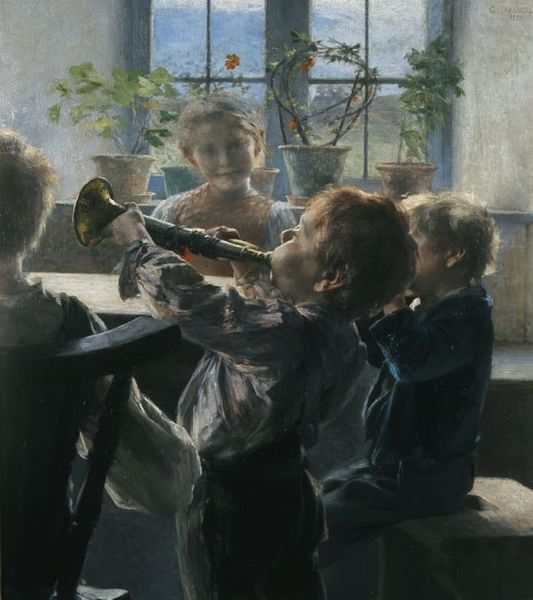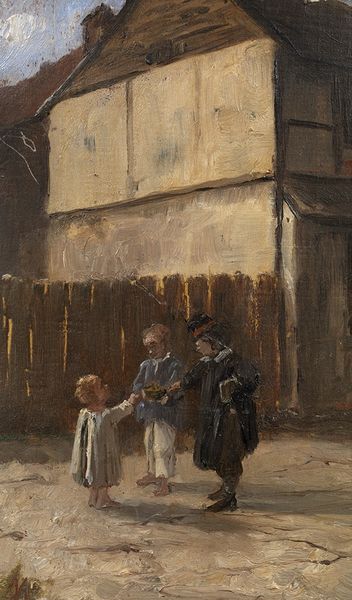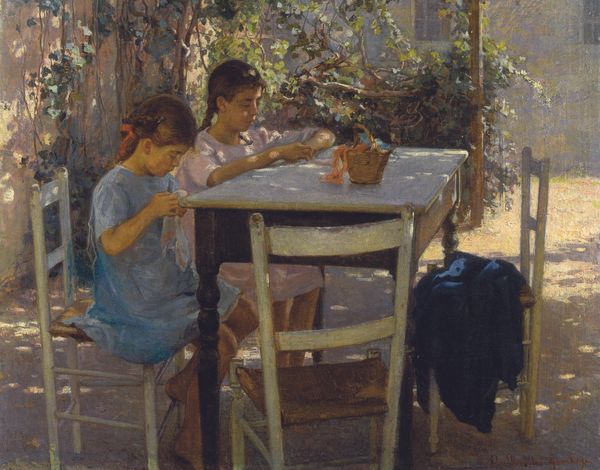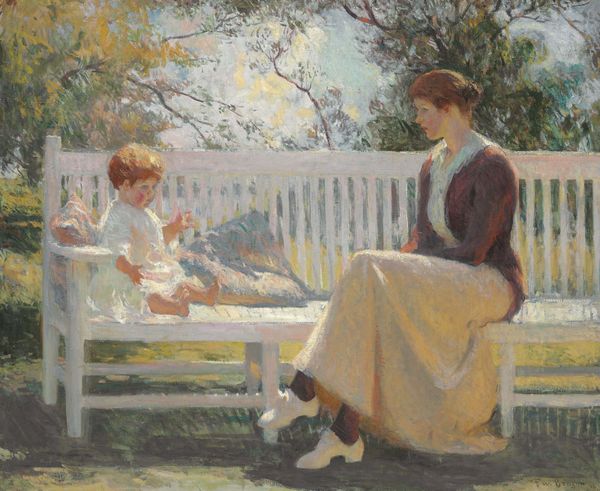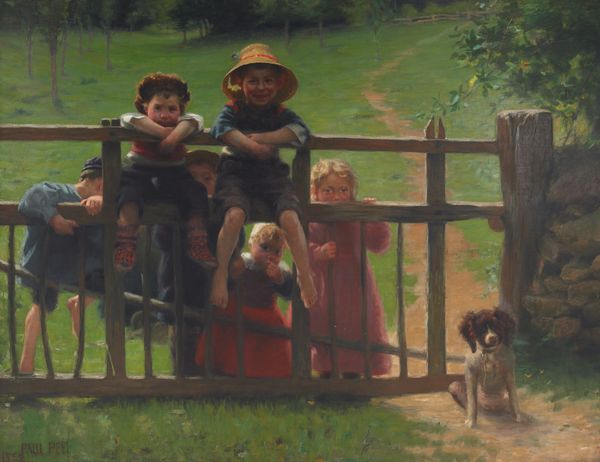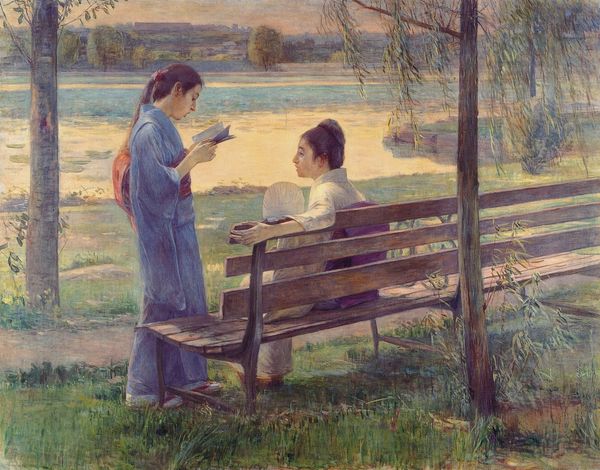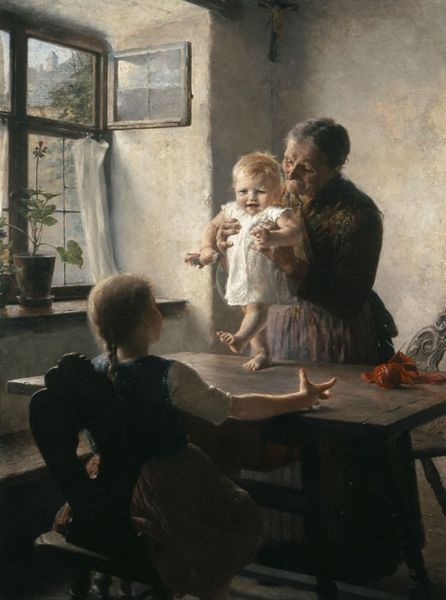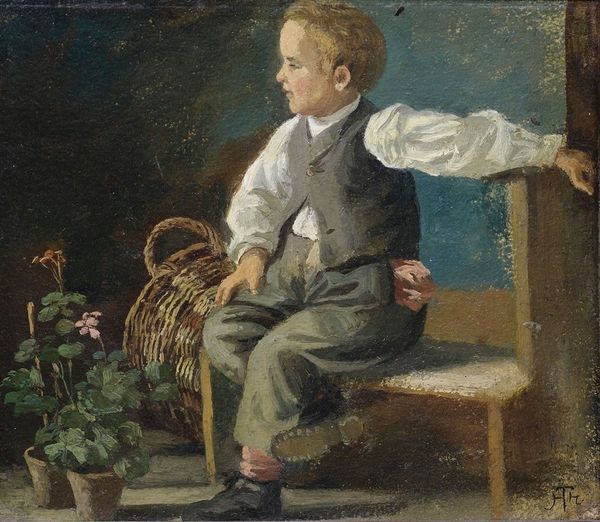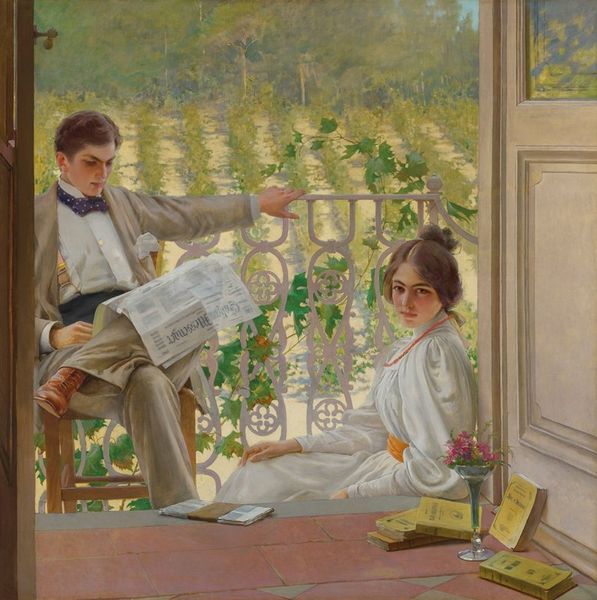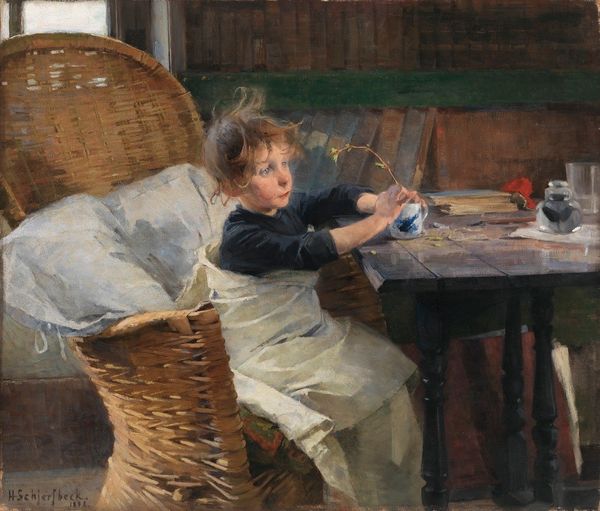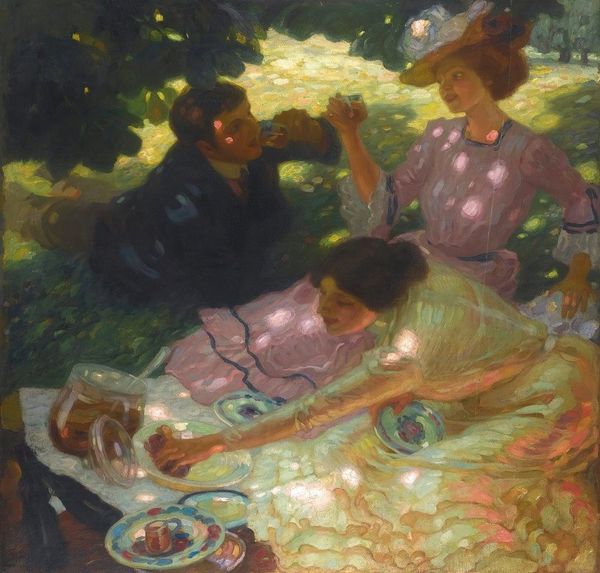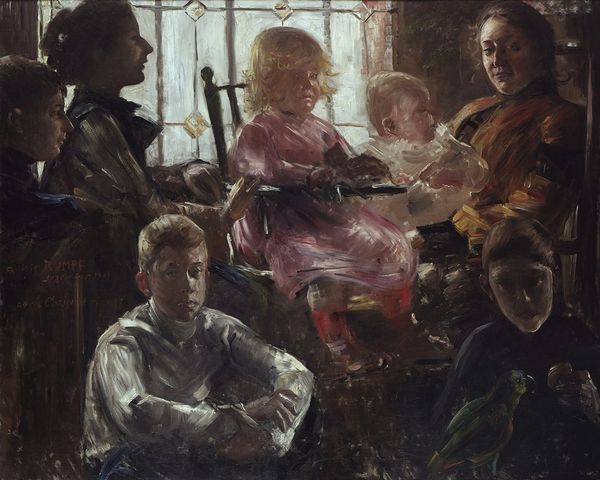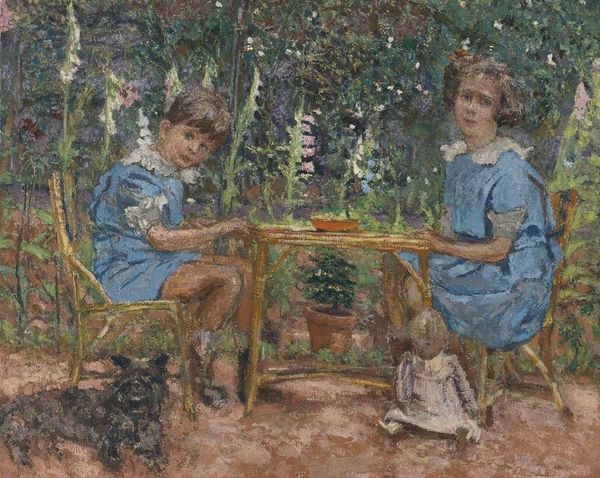
Dimensions: 72.5 cm (height) x 54.5 cm (width) (Netto)
Editor: Here we have "Undervisning pa landet", or "Country Teaching", a painting by Axel Helsted from 1894. It's painted en plein air, depicting a man and a young boy reading together on a bench outside. It feels very intimate and staged, like a portrait but also like we're peeking in on a real moment. How do you interpret this work? Curator: It's fascinating how Helsted presents this image of rural education, especially when viewed through the lens of its time. Considering the institutional history of art, genre scenes like this often served a specific purpose: to portray and perhaps idealize certain societal values. Do you see that here? Editor: I think so. It does feel idealized, almost like a moral lesson being illustrated. The framing is picturesque with the sea in the background; it almost seems unreal. What was the societal value Helsted may have wanted to promote in 1894? Curator: Precisely. The image conveys the importance of education, particularly within the family structure. Notice the composition; it's carefully constructed. The two figures are placed in a balanced, harmonious way, reinforcing the idea of a stable and ordered society. Think of the rising tide of industrialization; how might this scene contrast that in the late 19th Century? Editor: So, you are saying it’s Helsted romanticizing a more old-fashioned approach? It looks as if Helsted is placing value on what may soon be a lost image of traditional life. Also, is it implied that education at that time was something only available to people with leisure time, away from city work? Curator: That is indeed the historical and cultural tension at play here, excellent! The image promotes a lifestyle accessible to only some but deemed as valuable by many. How does knowing that reshape your initial interpretation? Editor: I still find it peaceful, but with this new context, there’s now a bit of melancholic feeling to it. It becomes a powerful commentary on class and societal shifts, all wrapped in a seemingly simple scene. Curator: And that's the power of viewing art through a historical lens. It helps us unpack the layers of meaning embedded within the image and understand the conversations it sparks about society and culture. Editor: Thanks. I’ll certainly remember this as I continue studying art!
Comments
No comments
Be the first to comment and join the conversation on the ultimate creative platform.
